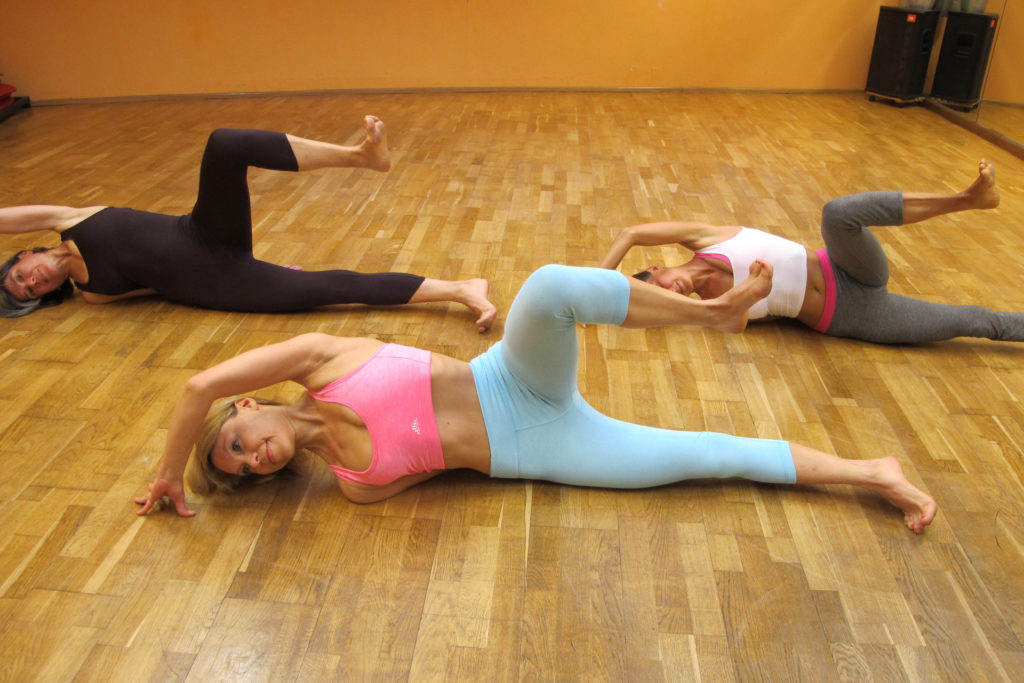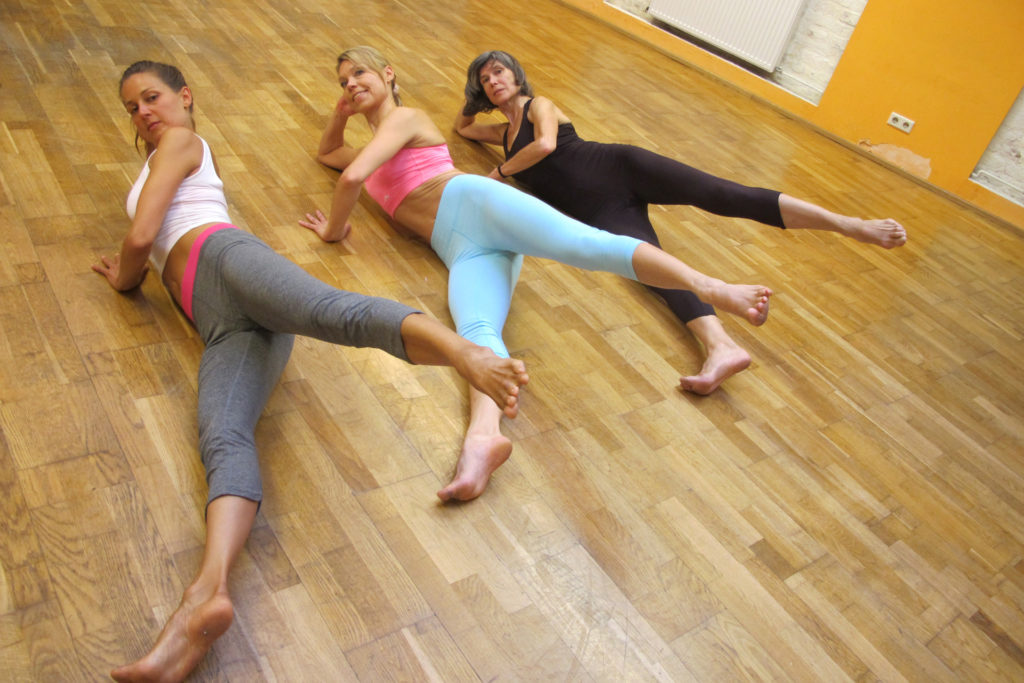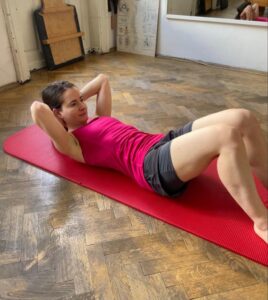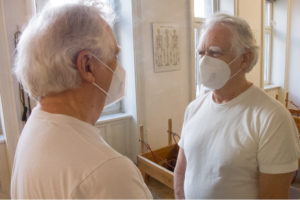It is so exhilarating and uplifting when we do the Pilates Side Leg Kick in a way that it matters. If we don’t do the Side Leg Kick in a way that it matters, we will experience all kinds of obstacles. We find these disturbing obstacles in the head, chest and pelvis – in the way we position and use our head, chest and pelvis. All of this affects the ease of the movement work that needs to be done to make the kick as effortless as a Sunday afternoon walk in the park.
How to do the Side Leg Kick effortlessly? Today I will show a simple and effective kinaesthetic learning tool that helps us develop awareness of our psoas. Let’s take the Side Leg Kick to a higher level!
A small side note: Even though I show the learning tool for Side Leg Kick 1 in the video below, the learning tool of course applies to all Side Leg Kick variations.
Let’s start …
Our Psoas activation learning tool

We lie on the left side of our body. The left leg is extended and the left heel is turned away from the floor in slight external rotation so that we can better base our pelvis on the floor. The left arm is extended under our ribcage to allow the best possible axial extension. The right leg is bent at a 90 degree angle and the right foot is in dorsal flexion to support the work of our iliopsoas, which is responsible for the flexion in the hip. The right arm is bent above the head and the right hand rests on the floor to support the axial lift and extension of our upper body.
Watch the Psaos Activation Learning Tool in action and the effect it has on the Side Leg Kick in the video below. By the way, the background music is from the song ‘Someday it will come’ by Alpha Rhyth Mix.
Now to you. Try it out! Get into the psoas activation position and hold it for a few minutes, then do the Side Leg Kick and experience the “a-ha!” effect. You’ll be surprised how easily you bring your leg towards your head.
Side Leg Kick optimisation
For the professionals among us: The work process and also the result is a
- dynamic lifting and extension of the upper body.
- isometric flexion of the right knee.
- dynamic rotation of the pelvis so that we can maintain our neutral pelvic position.
Expanded awareness in a few minutes
We receive clear kinaesthetic feedback and gain awareness about
- the work of our psoas as the driving force behind kicking our leg.
- the importance of the axial lifting and lengthening of the spine and upper body as a counterweight to the left stabilising leg, and
- the importance of the external rotation of the stabilising leg through our pelvis.
I am confident that our Psoas Activation Learning Tool will take your Pilates Side Leg Kick to a higher level – in terms of understanding and efficiency.
Try it & fly with it!
Did you like our blog post? Then kindly support us and share it on social media sites like Facebook, Twitter, group forums, blogs and – all the retro way – personally among friends. We also highly appreciate your feedback on our exercises and posts.





